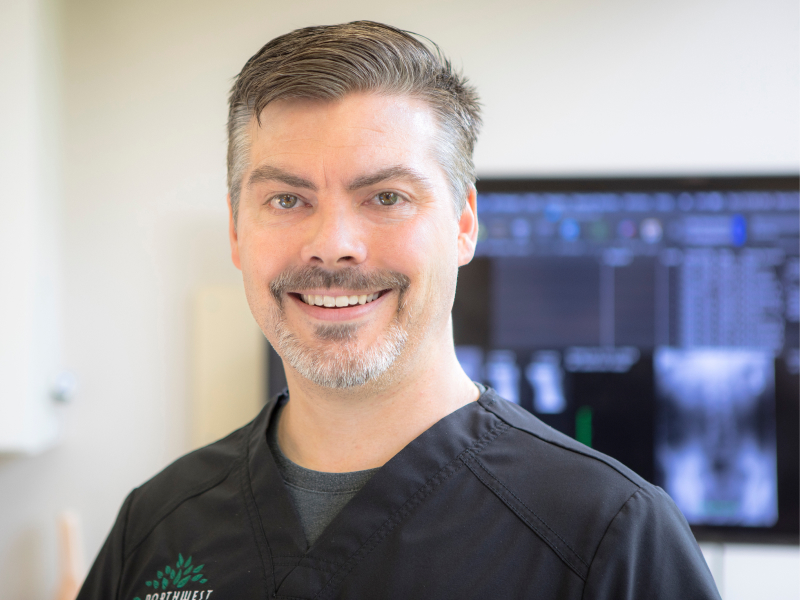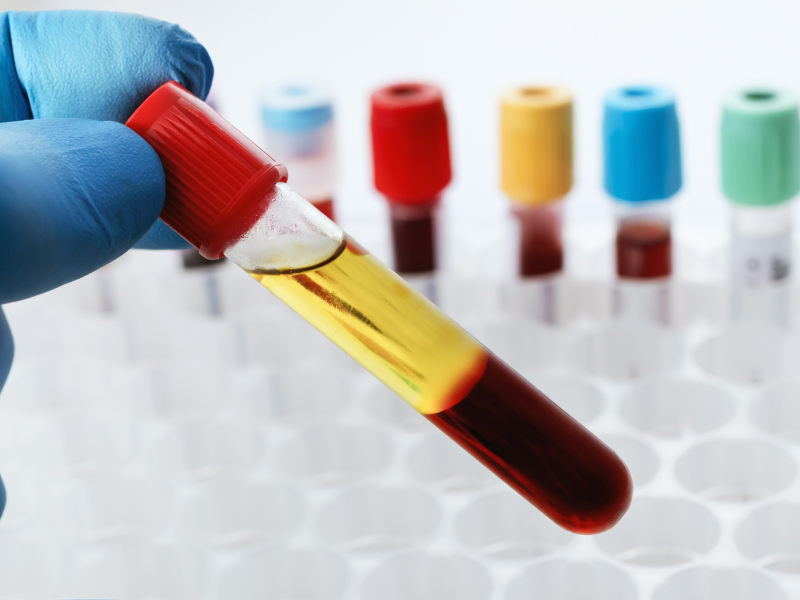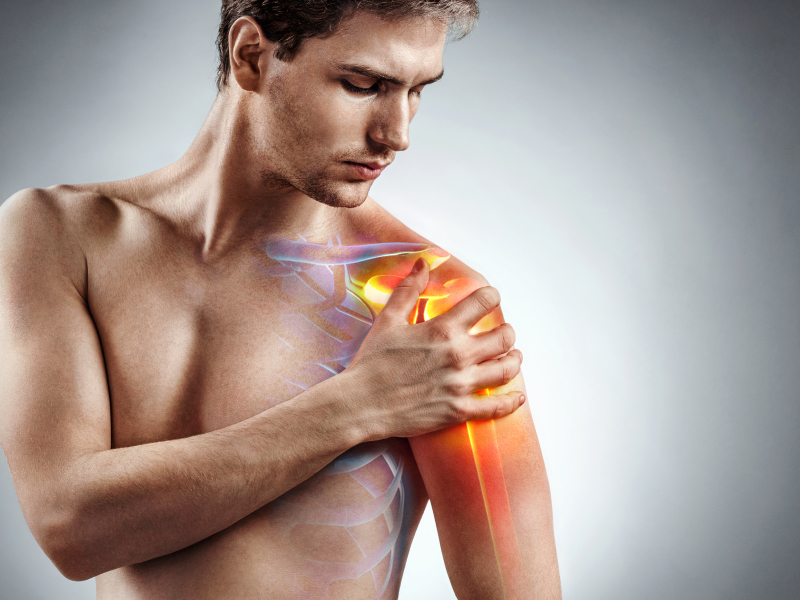Shoulder pain can be debilitating. It can affect your quality of life by making everyday activities painful or just impossible.
For instance, with a rotator cuff injury, it’s even hard to open the orange juice bottle. And with any form of shoulder instability or chronic pain, tasks like driving a car can actually become dangerous.
Whether your shoulder pain or injury is from an accident, sports, or deterioration due to overuse or age, traditional shoulder pain treatments will most often involve medication and physical therapy. They often require surgery, which many people try to avoid. But there is another way.
Regenerative orthopedics is the healing and regeneration of damaged tissues and joints. It doesn’t involve surgery or medication, and provides less invasive treatments, like Platelet Rich Plasma or PRP, that helps to keep many patients out of the operating room. Read on to learn how this may be the solution to your shoulder pain you’ve been hoping to find.
What Is PRP Therapy?
Platelet Rich Plasma (PRP) therapy is an innovative and natural, regenerative medicine treatment that uses your body’s own healing mechanisms to alleviate shoulder pain.
In this article, we explore this promising approach to shoulder pain management by delving into:
- The science behind platelet-rich plasma, known as PRP
- How NW Regen uses PRP for shoulder pain relief, and
- The potential risks and benefits of platelet-rich plasma therapy.
PRP is a component of our blood that is rich in platelets and growth factors, which are crucial for healing. When you sustain an injury, your body naturally sends platelets to the damaged area. These platelets release growth factors that stimulate tissue repair and regeneration. In PRP therapy, a concentrated form of these platelets is injected directly into the injured area to boost the body’s healing process, potentially leading to faster recovery and pain relief.

PRP is an advanced biocellular injection therapy that regulates inflammation, stimulates repair, and promotes remodeling of damaged tissues.
– Dr. Ryan Wood
This regenerative form of therapy is gaining traction in treating various conditions, including shoulder pain.
Here’s how PRP therapy works when you visit a regenerative health clinic:
- At NW Regen, we begin with a simple blood draw processed in our in-office lab under highly specialized protocols to produce platelet-rich plasma (PRP) tailored to you.
- Our physician then administers a PRP injection directly to the painful area to promote repair and healing, using precise ultrasound to visually guide the injection.
- The healing properties of the platelet-rich plasma go to work right away, promoting healing, reducing inflammation, and stimulating tissue regeneration.
The Science Behind PRP for Shoulder Pain Relief

PRP therapy aims to enhance the body’s natural healing process by delivering a high concentration of platelets directly to the injury site.
PRP therapy may be beneficial for various shoulder conditions, including:
- Rotator cuff tears
- Shoulder impingement syndrome
- Osteoarthritis of the shoulder
- Chronic shoulder bursitis
- Shoulder instability
PRP therapy may provide shoulder pain relief and improve function by enhancing the body’s natural healing process. But what’s the science behind how PRP works?
There are cells in our blood called “platelets” that initiate tissue repair. Platelets are made in our bone marrow, the sponge-like tissue inside our bones. Bone marrow contains stem cells that develop into red blood cells, white blood cells, and platelets.
Platelets form the first line of defense in response to tissue damage. They contain α-granules rich in growth factors and cytokines that promote tissue regeneration, healing and repair.
– Dr. Ryan Wood
These platelets release growth factors that stimulate cell proliferation, collagen production, and angiogenesis—which are all processes crucial for healing tendons, ligaments, muscles, and joints.
These are the structures affected in shoulder injuries, and platelets can help them heal.
How do PRP injections work?
- Platelet-rich plasma (PRP) is made by drawing blood from a patient and spinning it in a centrifuge to separate the plasma and platelets from red and white blood cells.
- Precisely injecting a platelet-rich solution directly to the injured tissue promotes the healing process.
- PRP also helps in the reduced use of narcotics, improved sleep, and reduction in pain perception.
How does a regenerative physician prepare PRP injections?
PRP is made by drawing blood from a patient and spinning it in a centrifuge to separate the plasma and platelets from red and white blood cells.
Not every PRP is prepared in the same way and can vary dramatically from practitioner to practitioner.
Though there are many forms of PRP, there are typically two ways to make it in a physician’s office.
- One method is through a pre-manufactured kit that requires several steps.
- The second requires more skill and knowledge, where the PRP is prepared in a dedicated office laboratory under a laminar flow, HEPA-filtered hood, and sterile

NW Regen’s in-office laboratory enables more flexibility tailoring PRP solutions for the individual needs of our patients.
Not every condition requires the same procedure, and what works for you may not work for someone else.
The PRP Injection Procedure for Shoulder
- We begin with a simple blood draw processed in our in-office lab under highly specialized protocols to produce platelet-rich plasma (PRP) tailored to you.
- Once the PRP is prepared, it is injected into the affected area of the shoulder. At NW Regen, Dr. Ryan Wood always utilizes ultrasound guided imaging to ensure precise placement.
- Post-injection, patients may experience temporary discomfort. However, the overall procedure is minimally invasive compared to surgery.
Comparing PRP to Traditional Shoulder Pain Treatments
While traditional treatments often focus on symptom management, PRP aims to promote tissue repair.
This can potentially address the root cause of the pain with healed tissues and eradication of pain.
Unlike traditional treatments such as physiotherapy, medication, or surgery, PRP therapy harnesses the body’s own healing mechanisms, offering a unique approach to shoulder pain relief with:
- No medication
- No surgery required
- Minimally invasive injections, and
- All-natural ingredients, derived from a patient’s own blood.
Potential Risks and Side Effects of PRP Therapy
Like any medical procedure, PRP therapy carries potential risks including infection, nerve damage, or pain at the injection site.
However, since PRP is derived from the patient’s own blood, the risk of allergic reaction is minimal, and it is a relatively safe procedure. Despite its safety, it’s crucial to have PRP therapy performed by a qualified healthcare professional to minimize potential risks and ensure the procedure is carried out correctly.

How Effective Is PRP for Shoulder Conditions?
Scientific evidence supporting the efficacy of PRP for shoulder pain is growing. Its effectiveness varies among individuals and largely depends on the type and severity of the shoulder condition.
More research is needed to establish standardized treatment guidelines, yet many patients report significant pain relief and improved function after PRP therapy.
These success stories make PRP a promising option for those seeking non-surgical treatments.
Whether your pain is congenital, degenerative, from a sports injury, arthritis, or whiplash – regenerative medicine can help. But it is important to note that PRP may not be suitable for all patients.
A thorough diagnosis is crucial to determine the most effective treatment plan.
Where Can I Find PRP Therapy?
NW Regen specializes in regenerative medicine techniques for orthopedic injuries and trauma, including all sorts of shoulder pain.
We treat musculoskeletal injuries and any condition causing acute or chronic pain involving tendons, ligaments, cartilage, muscles, or joints. Our tailored treatments are minimally invasive and rejuvenate and heal – for reduced pain, improved quality of life, and a holistic return to your body’s peak potential.
Other non-surgical orthopedic procedures used by Dr. Wood to facilitate healing of shoulder pain include:
Regenerative joint injection therapy injects solutions to stimulate healing and permanently strengthen and repair painful, injured joints – without surgery.
Advanced form of injection therapy using your blood platelets to promote healing, regulate inflammation, and restore damaged tissues.
Powerful injection therapies use a tissue graft from your body, rich in regenerative cells, to help repair degenerative conditions in ligaments, tendons, and muscles.
Perineural Injection Therapy (PI)
Small injections of pH-balanced healing solution immediately block receptors on your nerve endings responsible for pain and inflammation.
No matter how you received your orthopedic injury, regenerative medicine can help – whether your pain is congenital, degenerative, from a sports injury, arthritis, or whiplash. We treat musculoskeletal injuries and any condition causing acute or chronic pain involving tendons, ligaments, cartilage, muscles, or joints.
Our tailored treatments are minimally invasive and rejuvenate and heal – for reduced pain, improved quality of life, and a holistic return to your body’s peak potential.
If you’re experiencing shoulder pain, don’t wait. Contact NW Regen to schedule your consultation today.
NW Regen
We offer regenerative and interventional medicine – tailored to empower you with a more vibrant, active lifestyle.


